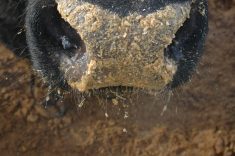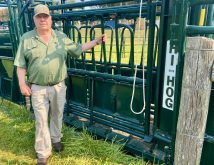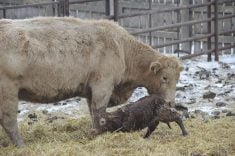More than 740,000 Canadian livestock died in barn fires from 2015-19; there were 65 fatal fires a year on average
The terrified bellowing of burning cattle. The devil’s high-pitched scream of panicky pigs on fire. The frantic neighing of burning horses. These are sounds of animals trapped inside a burning barn.
The sounds never go away for those firefighters and farmers who have heard the haunting howls of livestock dying in a burning barn. For some Canadian farmers, the experience has triggered deep depression, hospitalization and nervous breakdowns.
In the five-year period between 2015 and 2019, more than 740,000 animals died in barn fires in Canada. In that period, Canada averaged 65 fatal barn fires per year.
Read Also

Farming Smarter receives financial boost from Alberta government for potato research
Farming Smarter near Lethbridge got a boost to its research equipment, thanks to the Alberta government’s increase in funding for research associations.
The Humane Society International/Canada (HSI/C) quoted those figures after it released a five-year study titled Untold Suffering: The Tragic Impact of Barn Fires on Animals.
“The most common injury farmers suffer is nervous shock,” the report said.
“They are taken to the hospital for treatment, as the trauma associated with a barn fire can later develop into post-traumatic stress disorder (PTSD) and a sense of hopelessness. Farmers, neighbours, community members and firefighters say the screams and cries from cows or pigs trapped inside burning buildings can last for hours as animals burn alive. In other cases, entire barns have completely disappeared in as little as 13 minutes.”
The 30-page report is the first of its kind in Canada. It explains how the near total absence of mandatory safety measures has resulted in the deaths of hundreds of thousands of farm animals.
Livestock housing is generally of “low-human occupancy” so governments do not require farm buildings to have the same level of fire prevention equipment and safety protocols.
The report said not all fires are reported in the media and not all media reports include the number of animals that died, especially for smaller fires. The 740,000 total is a conservative estimate of the actual number of farm animal deaths that have occurred in fires. There are no federal or provincial laws in Canada specifically designed to protect farm animals from fires.
The Canadian Commission on Building and Fire Codes is responsible for developing these model codes, including for livestock housing. However, the requirements for large farm buildings are intended to safeguard humans, not animals. The commission says animals are considered property.
In contrast, the National Fire Protection Association in the United States has published a code specifically for all facilities that house animals. It states that animals must be protected from fire.
The scope of the code recognizes that “animals are sentient beings with a value greater than that of simple property. Animals, both domesticated and feral, lack the ability of self-preservation when housed in buildings and other structures.”
Given the high incidence of barn fires in Canada and the number of animals that have suffered as a result, HSI/C has urged the federal government to revise the proposed amendments to the National Building Code and National Fire Code to include specific fire safety requirements for farm buildings that house animals.
“Imagine the suffering of being burned alive, along with thousands of others, with no way to escape,” said Riana Topan, farm animal welfare specialist for HSI/C.
“No animal deserves to suffer so inhumanely. We urge building and fire code officials to reduce the risk of barn fires by amending our national construction model codes to require that farms have basic safety features, such as sprinklers and industrial-grade smoke detectors.
“Just last year, a fire at a large-scale facility in Manitoba claimed the lives of 27,000 chickens, while another in Quebec killed 700 pigs and sent the farm’s owner into nervous shock.”
The report said that smoke inhalation can inflame the lungs and airways, blocking oxygen. This can produce acute respiratory distress syndrome and respiratory failure.
The Canadian Commission on Building and Fire Codes is preparing to publish the 2020 editions of the National Building Code and National Fire Code. These model codes will include farm building requirements related to fire protection, structural design and dangerous goods.
However, even under the updated codes, the requirements for large farm buildings are intended to safeguard humans and not animals. Animals are still considered property.
The updated codes are expected to be adopted by all provinces and territories, which in turn are responsible for regulating and enforcing construction standards.


















